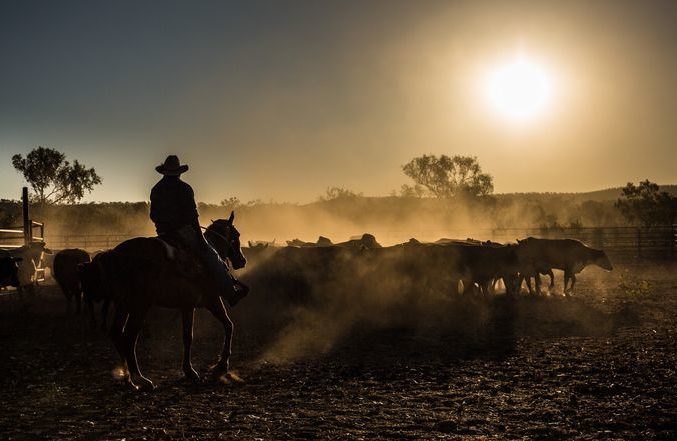Editor’s note: Justin Webb is co-founder and chairman at AgriWebb, based in Sydney, Australia. The views expressed in this guest article are the author’s own and do not necessarily represent those of AFN.
The Australian Academy of Science recently warned that the world must reach net-zero carbon emissions by 2050 if Australia is to avoid potentially insurmountable challenges to its cities, ecosystems, industries, food, and health systems.
While it has previously been suggested that agriculture should be exempt from our proposed 2050 net-zero carbon emissions target, industry leaders, such as the National Farmers’ Federation CEO Tony Mahar, have actively been advocating for the vital role agriculture can play in creating a more sustainable future.
Farming currently accounts for 14% of global greenhouse gas emissions (GHGe), with red meat production being labelled as a large contributor through enteric gases, manure, and land-clearing practices. Conversely, the UN Food and Agriculture Organization recently concluded that a 30% reduction of GHGe would be possible if producers in a given system, region, and climate adopted the technologies and practices currently used by the 10% of producers with the lowest emission intensity.
As the world’s largest exporter by value of beef and lamb, Australia carries the responsibility and opportunity to implement and support technologies that can create the world’s first and only net-negative carbon footprint of red meat production. Here’s how.
Commitment from the government
Agriculture is a cornerstone of the Australian economy, delivering 12% of the country’s GDP. But our only chance to maintain our current standard of living, and our economy, is if Australia rapidly addresses the carbon crisis. In fact, the UN Environment Programme recently announced that global emissions need to be reduced by 7.6% every year for a decade to keep global warming below 1.5 degrees celsius.
In recent weeks, we’ve seen some positive developments. The government’s recent federal budget saw investment for a biodiversity stewardship program which will see farmers trade credits with polluting industries for their environmental gains, not just their carbon offsets. On top of this, the commitment of A$238 million ($185 million) to help farmers better understand and manage their farms’ soil health is a vital step forward.
However, with Australia’s climate policies ranked almost last on a global scale, and a major conservation group claiming spending on the environment and climate represented less than 1% of the federal budget, the work cannot stop here.
Fighting carbon emissions with technology
Over the years, we’ve witnessed sectors such as electricity identify and adopt technologies to reduce carbon emissions through substantial public sector support and investment. Such technology advances in the sector have seen renewables contribute 21% of Australia’s power production.
As part of this year’s federal budget, A$1.2 billion ($931 million) is being committed to establishing Australia at the forefront of low emissions technology innovation. A$264 million ($205 million) will go towards the continued development of carbon capture, use, and storage; while A$59.6 million ($46.2 million) will be invested to support a National Soil Carbon Innovation Challenge and trial new agricultural feed technologies that reduce emissions from livestock.
On top of this, the use of data-driven technology to measure and forecast soil nutrition and grass pasture management can play a vital role in regenerative farming practices, which in turn will cut down chemical use and offset carbon emissions through carbon credits. As an example, technologies like AgriWebb allow farmers to record feed growth of pastures, helping project the precise number of days for livestock to remain in a certain field before they are moved on. This can can create the data required to optimize carbon capture and run carbon-negative beef production.
We’re starting to see government and businesses back the role of innovative technology in our net-zero carbon emissions goal. In January, the state-owned Clean Energy Finance Corporation committed A$5 million ($3.88 million) to support AgriWebb and capitalize on its potential to drive down carbon emissions from the agriculture sector – a huge step in the right direction for the backing of technology.
Recent international recognition of regenerative grazing practices that can unlock carbon neutrality for the industry has given the government further reason to support healthy, responsible, and sustainable Australian beef and lamb production. While recent commitments from the government are a welcome step forward, this cannot be a tick-box exercise – and our work must continue.
While governments and businesses around the world continue to set laudable targets for net-zero carbon emissions, the challenge to help farmers maintain profitability and productivity of food production while implementing sustainable and carbon-friendly practices remains crucial.
Through the use of innovative technologies, including on-farm data tools, and further support from the government, we have the power to facilitate a nationwide net-neutral beef and lamb production – but we collectively must continue to charge forward.




